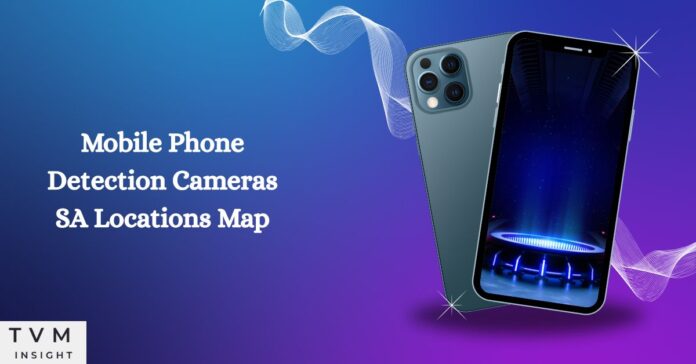Navigating the roads of South Australia has become more high-stakes with the rise of mobile phone detection cameras SA locations map systems. These smart surveillance tools are transforming SA road safety by cracking down on distracted driving rules and reinforcing strict driving laws in South Australia.
Unlike traditional traffic enforcement cameras, these systems are designed to capture phone use in real time, even during brief moments at stoplights or in traffic. Whether you’re heading through mobile detection zones or along major highways, knowing where cameras are placed can help you avoid unnecessary mobile phone fines and stay compliant. Understanding this evolving technology is crucial for every responsible South Australian driver.
The mobile phone detection cameras SA locations map reveals camera positions used to detect illegal phone use while driving. These AI-based systems improve SA road safety by enforcing laws and issuing mobile phone fines. Stay updated with locations to drive safely and avoid distracted driving rule violations.
Table of Contents
What Are Mobile Phone Detection Cameras in SA?
Across South Australia, authorities have introduced mobile phone detection cameras to reduce road risks. These cameras are part of SA road safety efforts to catch drivers using phones illegally. Installed along highways and urban roads, the goal is to enforce distracted driving rules and save lives by reducing dangerous habits.
These smart devices aren’t just regular traffic enforcement cameras. They use AI-driven systems to scan through thousands of passing cars. They can catch motorists texting, scrolling, or holding a phone—even if it’s barely visible. This makes traffic violation detection quicker and far more accurate than before.
Because mobile detection zones change frequently, many drivers don’t realize when they’re being monitored. This unpredictability pushes drivers to stay alert and follow driving laws in South Australia more carefully, lowering the chances of getting a mobile phone fine or worse, causing an accident.
Latest Mobile Phone Detection Cameras SA Locations Map
Finding the most recent mobile phone camera locations in SA is challenging. The government doesn’t always announce updates, keeping drivers on their toes. However, ongoing mapping by transport bodies and road safety researchers provides valuable insight into active zones and hotspots.
Here’s a snapshot of some known areas:
| Location | Status | Last Verified |
| South Eastern Freeway | Active | June 2025 |
| Port Wakefield Road | Confirmed Zone | May 2025 |
| Main North Road, Adelaide | Active | July 2025 |
| North South Corridor | Monitored | Ongoing |
You can also use Google Maps overlays and third-party trackers to find a camera map for mobile detection in real-time. Still, not all detection zones mapped for SA drivers are 100% transparent. Keep checking official sites and stay within the law to avoid phone camera fines in SA.
How These Cameras Work and What They Detect
How mobile cameras work while driving is both fascinating and precise. Each unit is equipped with high-resolution lenses and motion sensors. These cameras photograph vehicles from above, scanning windscreens and dashboards to see if a driver is touching or holding a device.
Once flagged, a human reviewer verifies whether the behavior violates SA transport regulations. This prevents mistakes and ensures fair judgment. Offenders are then issued a notice including photographic evidence. The system runs 24/7—even in rain or darkness.
These cameras are part of speed and phone detection systems that often operate together. While capturing high speeds, they also check for phone usage detection while driving, especially in mobile detection zones. It’s a smart, integrated method that’s reshaping enforcement across South Australia.
Penalties for Using a Mobile Phone While Driving in SA
The SA mobile phone usage penalty is among the harshest in Australia. Drivers caught using phones can face a $540 fine and three demerit points, plus a $99 levy. These penalties apply even if you’re stationary in traffic or at a red light. The law applies to all drivers, including those on provisional or learner’s licenses.
Now you may wonder, is it legal to use a mobile while driving in SA under any conditions? Only hands-free systems are allowed. Touching your device—even to change music—could lead to a violation. These strict driving laws in South Australia aim to eliminate distraction.
Unlike other states, SA doesn’t reduce penalties based on offense type. Whether it’s a first or third offense, the rules remain firm. These fines, alongside the use of real-time detection cameras, show how serious the government is about road safety and reducing crashes.
How to Stay Updated with New Camera Installations Across SA
New mobile phone detection cameras SA locations map updates are often released without prior notice. So, how can you stay ahead? First, check the SA Government’s Department for Infrastructure and Transport website regularly. They often post updates, media releases, and changes to road laws.
Apps like Google Maps and Waze offer real-time detection cameras SA alerts based on user reports. You can also follow local news outlets, join online driving forums, or set up Google alerts for “where are phone detection cameras in SA” to get notified instantly.
Avoid surprises by checking the map, staying informed, and remembering—what phone detection cameras detect isn’t always obvious. They’re getting smarter, faster, and harder to spot. Obeying the rules is the only surefire way to stay safe and fine-free.
Conclusion
Understanding the mobile phone detection cameras SA locations map is no longer optional—it’s essential for staying safe and fine-free on South Australia’s roads. As these systems become more accurate and widespread, they serve as a powerful reminder to obey driving laws in South Australia. Whether you’re commuting daily or driving occasionally, respecting distracted driving rules, avoiding mobile phone fines, and staying informed about mobile detection zones will help you protect both your wallet and your life. With traffic enforcement cameras watching closely, it’s time to prioritize smarter, safer driving.

